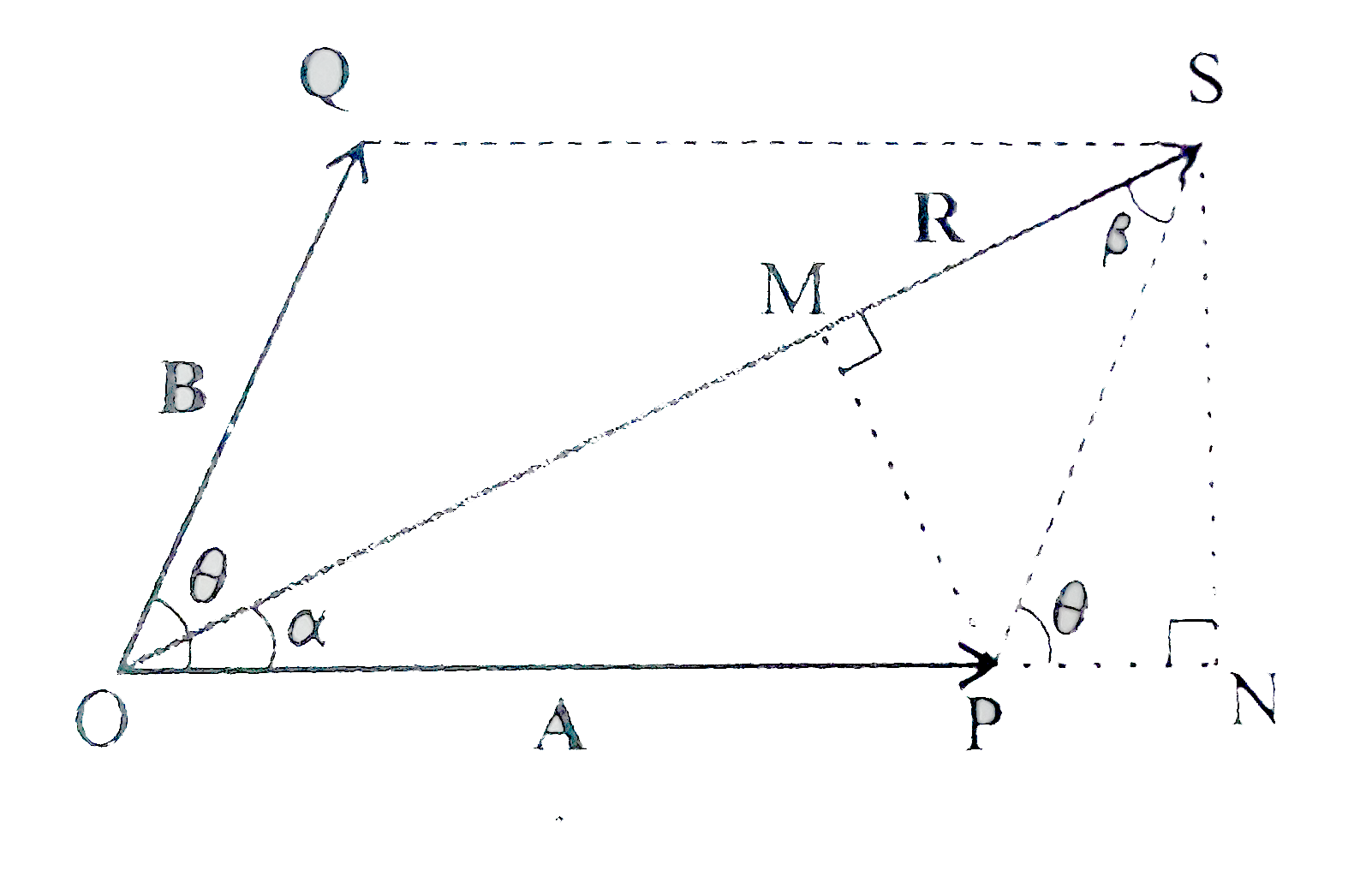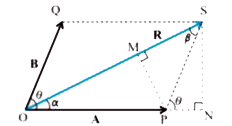find the resultant of two forces each having magnitude F0 and angle between them is θ.Solution in Telugu
F2Resultant=F20+F20+2F20cosθ=2F20(1+cosθ)=2F20(1+2cos2θ2−1)=2F20×2cos2θ2FResultant =2F0cosθ2
Topper's Solved these Questions
- BOOK - AAKASH SERIESCHAPTER - ELEMENTS OF VECTORSEXERCISE - LONG ANSWER TYPE QUESTIONS5videos
ELEMENTS OF VECTORS
- BOOK - AAKASH SERIESCHAPTER - ELEMENTS OF VECTORSEXERCISE - SHORT ANSWER TYPE QUESTIONS9videos
ELEMENTS OF VECTORS
- BOOK - AAKASH SERIESCHAPTER - ELECTROSTATICSEXERCISE - ADDITIONAL PRACTICE EXERCISE (PRACTICE SHEET (ADVANCED) INTEGER TYPE QUESTIONS)4videos
ELECTROSTATICS
- BOOK - AAKASH SERIESCHAPTER - GEOMETRICAL OPTICSEXERCISE - ADDITIONAL PRACTICE EXERCISE (LEVEL-II PRACTICE SHEET (ADVANCED) INTEGER TYPE QUESTIONS)6videos
GEOMETRICAL OPTICS
Similar Questions
State parallelogram law of vectors . Derive an expression for the magnitude and direction of the resultant vector .
02:28View SolutionState and prove the parallelogram law of vectors.
03:54View SolutionFour identical point charges are fixed at the four corners of a square of a side length l. Another charged particle of mass m and charge +q is projected towards centre of square from a large, distance along the line perpendicular to plane of square. The minimum value of initial velocity V0 in m/s required to cross the square is? (m=1gm.l=4√2m,Q=1μc,q=0.5μc)
 09:36View Solution
09:36View SolutionA fish is at a depth of 12 cm in water is viewed by an observer on the bank of a lake. To what height the image of the fish is raised in cm ?
02:59View SolutionTwo forces, each of magnitude F have a resultant of the same magnitude F. The angle between the two forces is
02:20View SolutionFind the magnitude and direction of the resultant of two vectors A and B in the terms of their magnitudes and angle θ between them.
 02:14View Solution
02:14View SolutionFind the magnitude and direction of the resultant of two vectors A and B in the terms of their magnitudes and angle θ between them.
 02:41View Solution
02:41View SolutionTwo forces of equal magnitude F are at a point. If theta is the angle between two forces then magnitude of the resultant forces will be
04:36View SolutionTwo equal forces are acting at a point with an angle of 60∘ between them. If the resultant force is equal to 20√3 N, find the magnitude of each force .
06:32View SolutionTwo equal forces are acting at a point with an angle of 60∘ between them. If the resultant force is equal to 20√3 N, find the magnitude of each force .
View SolutionA resultant of 60 N is produced due to two forces having magnitudes in the ratio 4:5 Calculate the magnitude of each if the angle between them is 30^(@)
05:21View SolutionFind the magnitude and direction of the resultant of two vectors A and B in terms of their magnitudes and angle θ between them .
 02:22View Solution
02:22View SolutionFind the magnitude and direction of the resultant of two vectors A and B in terms of their magnitudes and angle theta between them .
02:01View SolutionFind the magnitude and direction of the resultant of two vectors A and B in terms of their magnitudes and angle θ between them .
 01:23View Solution
01:23View SolutionFind the magnitude and direction of the resultant of two vectors A and B in the terms of their magnitudes and angle θ between them.
 View Solution
View Solution
